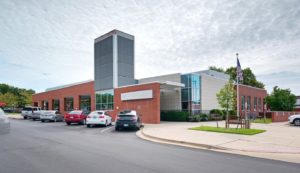Kansas State Board of Education subject of scathing report on at-risk student spending
(The Sentinel) – A new report from the Kansas Division of Legislative Post Audit paints a damning picture of mismanagement and misuse of funding for “At Risk” students.
Presented…

(The Sentinel) – A new report from the Kansas Division of Legislative Post Audit paints a damning picture of mismanagement and misuse of funding for “At Risk” students.
Presented on July 6, 2023, the audit covers the 2021-22 school years and found that the “significant problems” found in the 2019 audit still exist and none of their recommendations from the time have been actually addressed.
Indeed, state law requires that districts may only use at-risk funding on programs approved by the Kansas State Board of Education. Those programs are required to be “evidence-based,” and be “based on peer-reviewed research that shows the program produced better student outcomes over a 5-year period than would otherwise be achieved.”
In their conclusion, LPA was scathing.
“This is the second time we have evaluated district at-risk expenditures and KSDE’s role in at-risk programs in the last 4 years,” the report reads. Despite calling out several problems and making recommendations to correct those problems in December 2019, little appears to have changed. The problems with the department’s approved at-risk program list have persisted and are especially concerning.”
Education officials’ disdain for improving student achievement is also persistent and very concerning.
In 2015, about a third of low-income students were below grade level in math and reading; now, nearly half are below grade level and less than 20% are proficient.
As the Sentinel reported just a few months ago, KSDE — and other state agencies — have been particularly derelict in implementing LPA recommendations.
LPA evaluated 40 programs of the 272 programs on the approved list — some at random, some because they were being used by districts within the state — and found none of them met statutory criteria to even be included on the list.
In fact, LPA found:
- For 22 (55%) of the programs we reviewed, they could not find peer-reviewed research. In several cases, the only research they could find was student dissertations or research conducted by the program’s vendor. They did not consider research from either of these sources to be peer-reviewed.
- 17 (43%) programs had peer-reviewed research, but the research did not evaluate students over a 5-year period. In all cases, the research evaluated students for much shorter durations.
- 1 (3%) program met the statutory evidence-based requirement but it was not for at-risk. It had peer-reviewed research that evaluated students over a 5-year period. The research showed improved outcomes over the years it reviewed. However, the program was a general education program (career and technical education) that did not target at-risk students.
Additionally, most of the approved programs they reviewed had little to no evidence of effectiveness.
As noted above, 22 of the programs had no-peer reviewed research, as for the rest:
- For 6 (15%) programs, the research indicated the program was not effective or had only weak evidence of effectiveness. For example, one study did not find any improvement in students who used visual phonics (a system of hand shapes that represent how letters sound). Additionally, a meta-analysis of that program noted that more research was necessary if it was to become an evidence-based practice.
- 5 (13%) programs had mixed results. For example, a study examining phoneme sequencing (connecting the sounds of letters to the formation of words) found potentially positive effects on reading fluency, no effects on reading comprehension, and potentially negative effects on writing.
- 7 (18%) programs had moderate to strong evidence of effectiveness. For example, a research clearinghouse associated with U.S. Housing and Human Services rated Parents as Teachers as a well-supported practice. It also noted that research had found a sustained favorable effect for at least 12 months.
LPA also found that many of the KSDE approved programs did not actually appear to meet the purpose of at-risk programs. Many were general education programs available to all students.
“For example, the approved list included career and technical education, virtual schools, dual-credit courses, and Kahn Academy (free online courses for pre-K through high school). KSDE approved these programs even though all students have access to them,” the report reads. “Further, several general math and reading curricula, such as GoMath or Dreambox were listed as approved at-risk programs. These are general curricula districts often use district-wide.”
Most funding goes to salaries, benefits — not students
According to the report, in 2021-22, the state provided $406.3 million in dedicated funding for school districts to deliver additional services to students at risk of academic failure.
The way money is allocated is determined largely by the number of students who are eligible for free or reduced lunch — although the individual districts are allowed to determine who is “at-risk” and money generated by an individual student may not actually be spent on that student.
Moreover, LPA reviewed 20 districts’ at-risk funding, almost $176 million, and found most of it — went to paying teacher salaries and benefits — not on actual programs.
In fact, half the districts reviewed spent 100% of their money on salaries and benefits, only two Spring Hill and Oberlin spent under 90% at 87% and 67% respectively. Overall 97% of funding went to salaries and of the remaining 3% most ended up being spent largely for professional services (i.e. professional development or transportation) and supplies.
LPA noted that outcomes matter and that the poor state of the programs are not helping at-risk students.
“As outcomes show, at-risk students are behind academically and do not appear to be making up much ground,” the report reads. “It is critical that the department’s list includes programs that are proven effective for at-risk students. When the department’s list is poor, district spending is less likely to be targeted to at-risk students. More importantly, struggling students are less likely to get the effective help they need.”
KSDE and the State Board of Education obviously will not compel school districts to spend money in accordance with state law and isn’t concerned with poor performance. The question now becomes whether legislators will continue to condone their behavior.



